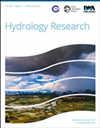喜马拉雅山区农村社区确定适合传统博卡里水采集的地点
IF 2.4
4区 环境科学与生态学
Q2 Environmental Science
引用次数: 3
摘要
在喜马拉雅山的季风季节储存径流对于有足够的水来应对旱季至关重要,特别是考虑到气候变化正在改变降雨强度和模式。尼泊尔传统的水塘被称为pokharis,主要用于储存径流,用于养牛和稻田补充灌溉。当地社区有兴趣恢复现有的pokharis并建造新的pokhari,以改善他们的经济和生活条件。选择最适合pokharis的地点至关重要;然而,可用于大规模选址的信息很少。对传统池塘选址的多个相关参数进行综合分析,可以更有效地收集雨水,并提供有用的水资源管理工具。在这项工作中,我们提出了一种基于地理信息系统(GIS)、多准则决策(MCDM)和参与式研究的波卡里斯最佳选址分析方法。据我们所知,这是尼泊尔首次对传统池塘进行大规模最佳选址分析。0.423平方公里的面积(占研究面积的3.47%)被归类为高度适合,与现有的pokharis 100%一致。尽管数据分辨率较低,需要对最终选址进行进一步的现场检查,但我们的结果为波卡里斯的大规模适宜性提供了可靠的指导,支持了该地区的水资源恢复项目。本文章由计算机程序翻译,如有差异,请以英文原文为准。
Identification of suitable sites for traditional pokhari water harvesting in mountain rural communities of the Himalaya
Storing runoff during the monsoon season in Himalayan hills is crucial to have enough water to cope with the dry season, especially considering that climate change is changing rainfall intensity and pattern. Traditional Nepalese water ponds, called pokharis, are used to store runoff mainly for cattle rearing and rice fields supplementary irrigation. Local communities are interested in restoring existing pokharis and building new ones to improve their economical and living conditions. Selecting the most suitable locations for pokharis is of crucial importance; however, scarce information is available for large-scale site selection. A comprehensive analysis of multiple relevant parameters for traditional ponds siting can lead to more efficient rainwater collection and provide a useful water resource management tool. In this work, we propose a methodology for pokharis’ best-siting analysis, based on geographic information system (GIS), multi-criteria decision-making (MCDM), and participatory research. To our knowledge, this is the first large-scale best-siting analysis for traditional ponds in Nepal. An area of 0.423 km2 (3.47% of the study area) is classified as highly suitable, with 100% agreement with existing pokharis. Despite the low data resolution, which requires a further field inspection for the final site selection, our results provide reliable guidance for pokharis’ large-scale suitability, supporting water-resilience projects in the area.
求助全文
通过发布文献求助,成功后即可免费获取论文全文。
去求助
来源期刊

Hydrology Research
Environmental Science-Water Science and Technology
CiteScore
5.30
自引率
7.40%
发文量
70
审稿时长
17 weeks
期刊介绍:
Hydrology Research provides international coverage on all aspects of hydrology in its widest sense, and welcomes the submission of papers from across the subject. While emphasis is placed on studies of the hydrological cycle, the Journal also covers the physics and chemistry of water. Hydrology Research is intended to be a link between basic hydrological research and the practical application of scientific results within the broad field of water management.
 求助内容:
求助内容: 应助结果提醒方式:
应助结果提醒方式:


